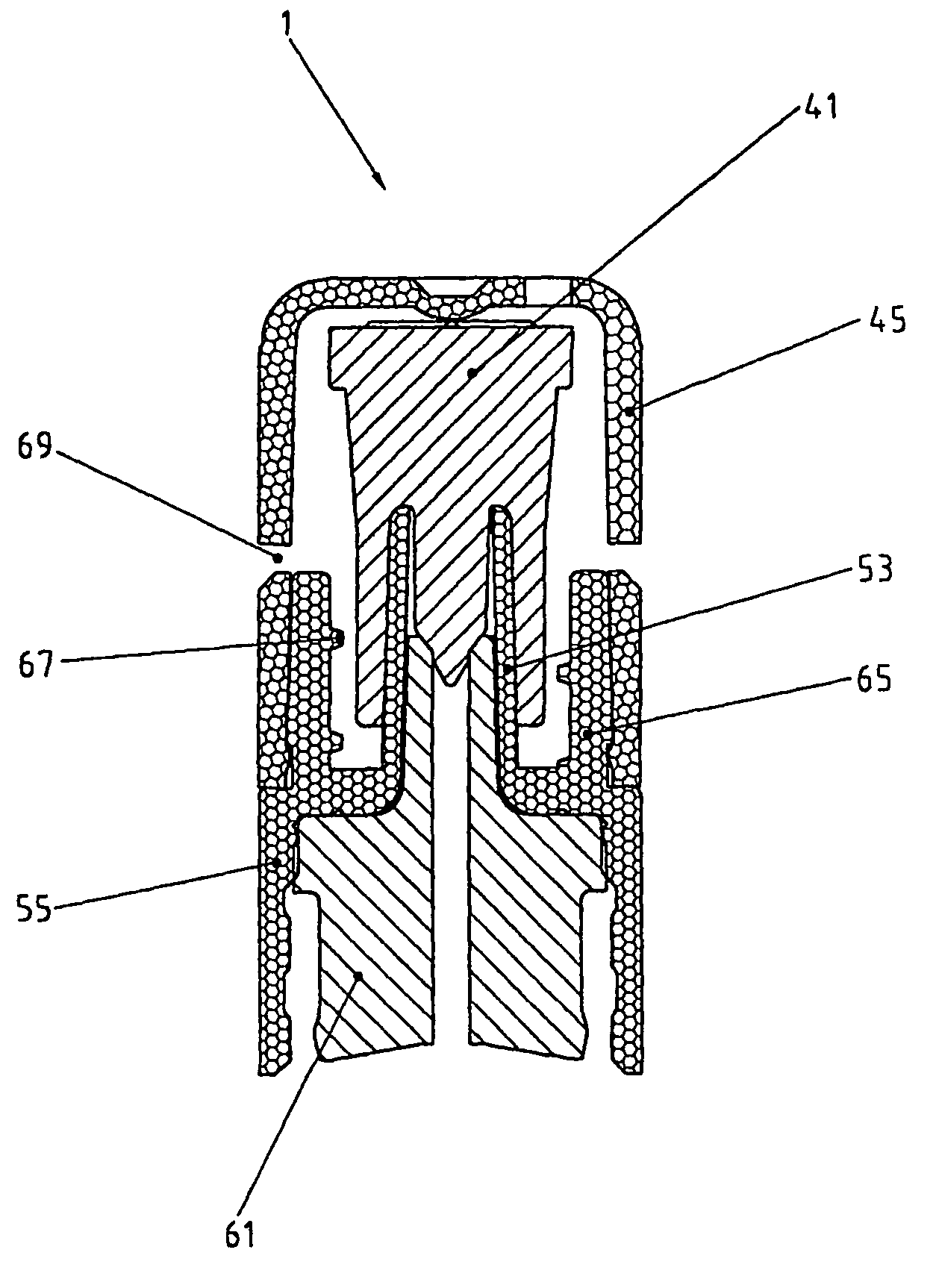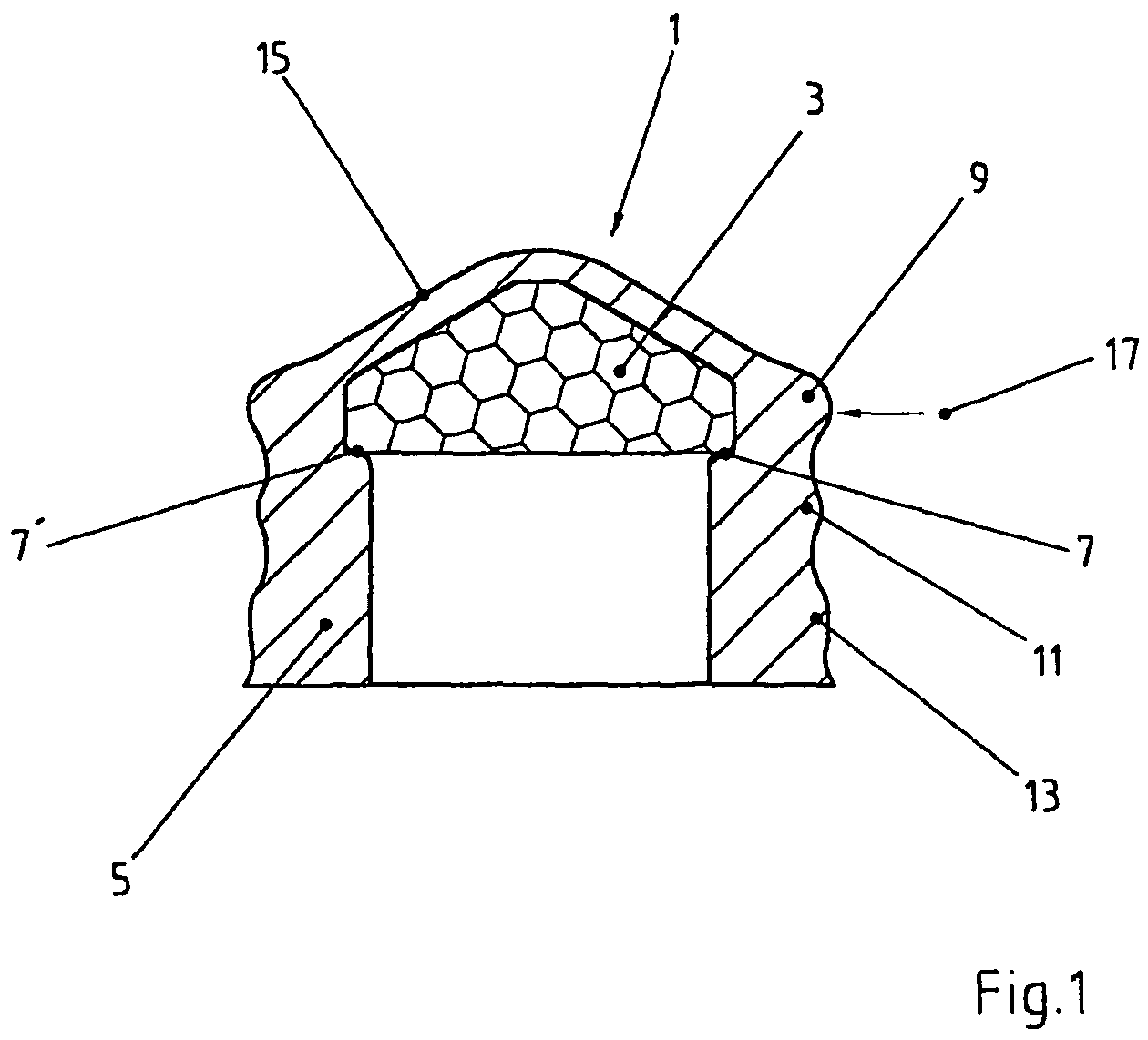Sealing element
- Summary
- Abstract
- Description
- Claims
- Application Information
AI Technical Summary
Benefits of technology
Problems solved by technology
Method used
Image
Examples
Embodiment Construction
[0027]FIG. 1 shows a sealing element 1 that consists of a support element 3 with a stable shape and an elastically deformable sealing sleeve 5. The support element 3 and the sealing sleeve 5 are designed as cylindrical rotation elements. The sealing sleeve 5 is designed in such a way that it is in contact with the majority of the surface of support element 3, i.e., at least partially surrounds it. The sealing sleeve 5 has, on the inside, a surrounding step 7, 7′ that is also in contact with support element 3. Because of the elasticity of the sealing sleeve 5 and the step 7, into which the support element 3 can engage, the support element 3 is held securely.
[0028]Support element 3 is also characterized in that it has higher strength than the sealing sleeve 5. Thus it is used to stabilize the sealing element 1, in particular in the sense that the total elasticity of sealing element 1 is reduced, i.e., it is less compressible. Preferably the support element 3 is designed in such a way ...
PUM
 Login to View More
Login to View More Abstract
Description
Claims
Application Information
 Login to View More
Login to View More - R&D
- Intellectual Property
- Life Sciences
- Materials
- Tech Scout
- Unparalleled Data Quality
- Higher Quality Content
- 60% Fewer Hallucinations
Browse by: Latest US Patents, China's latest patents, Technical Efficacy Thesaurus, Application Domain, Technology Topic, Popular Technical Reports.
© 2025 PatSnap. All rights reserved.Legal|Privacy policy|Modern Slavery Act Transparency Statement|Sitemap|About US| Contact US: help@patsnap.com



